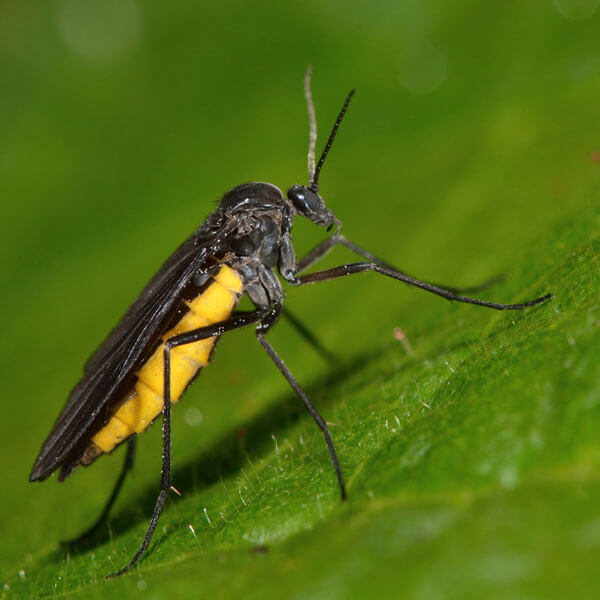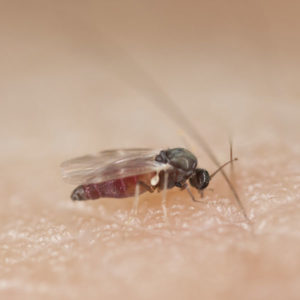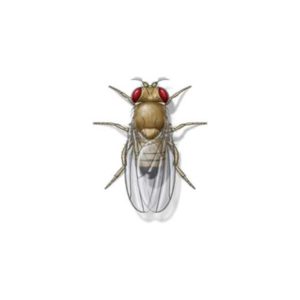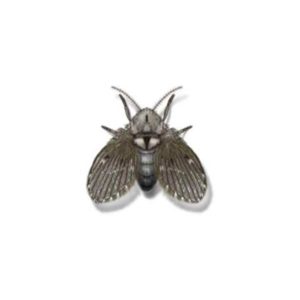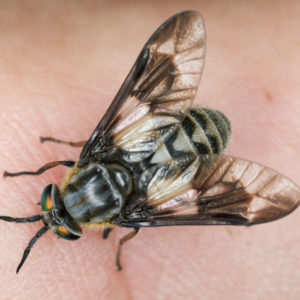Fungus gnats are small, delicate-looking insects with long wings and spindly legs. Occasionally they can become a nuisance in residential and commercial buildings where ferns and other house plants containing soil rich in organic matter serve as a breeding source. Their larvae primarily feed on fungi and organic matter in the soil, but they also chew roots and can be a problem in greenhouses, nurseries, and interior plantscapes. Adults are attracted to lights and are often first noticed at windows or light fixtures. Understanding the nuances of fungus gnat behavior, their lifecycle, and effective eradication methods is crucial for protecting your plants and maintaining a healthy living space.
Unsure if it’s a fungus gnat? Take a look at the most common flies found in North Carolina to help identify the specific fly species you are dealing with.
Fungus Gnat Identification
Correct identification is the cornerstone of effective pest management. Knowing what fungus gnats look like and recognizing the signs of their presence can help in early detection and control.
What Do Fungus Gnats Look Like?
Fungus gnats are tiny, but under close inspection, their characteristics become distinct. Adults are about 1/16 to 1/8 inches long, with a delicate, mosquito-like appearance. Their dark coloration, paired with transparent wings, makes them somewhat difficult to spot until they swarm. Their most distinct feature, however, is their behavior of hovering around soil and plants, which is a clear indicator of their presence.
Signs of a Fungus Gnat Infestation
An infestation might not be apparent until it becomes severe. Early signs include:
- Small flies hovering around indoor plants or darting away when the soil is disturbed.
- Seedlings or young plants beginning to show signs of distress without clear over or under-watering issues.
- Visible larvae in the soil, which appear as tiny, worm-like creatures when the topsoil is examined closely.
Habitat, Diet, Life Cycle & Bites
Where Do Fungus Gnats Live?
Fungus gnats thrive in environments abundant in moisture and organic material. Outdoors, they are drawn to areas where there is excessive water or in low-lying regions that retain significant moisture after heavy rainfall. These gnats are also attracted to light and can be observed hovering near windows indoors. Despite their weak flying ability compared to house flies, they predominantly inhabit areas near potted plants indoors. Additionally, fungus gnats can be found in indoor spaces with high moisture levels such as kitchens, bathrooms, laundry rooms, and crawl spaces. Their larvae particularly flourish in the upper layers of soil, especially when consistently damp. Consequently, fungus gnats are commonly encountered in overwatered houseplants, greenhouses, and any indoor or outdoor locations where humidity and organic decay intersect.
Diet of a Fungus Gnat
The diet of fungus gnat larvae includes fungus, decaying plant material, and the tender roots of plants, which can lead to significant plant stress and damage. Adults are less concerned with feeding and more focused on reproduction, but they are attracted to the same moist environments as their larvae for laying eggs.
Life Cycle of a Fungus Gnat
Understanding the fungus gnat life cycle is key to interrupting their reproduction and infestation. From egg to adult, the cycle can be as short as three weeks. Eggs are laid in moist soil and hatch into larvae, which feed for about two weeks before pupating. Adults emerge soon after, ready to mate and continue the cycle. Breaking this cycle requires targeted interventions at multiple stages.
Fungus Gnat Bites
Fungus gnats are not known to bite humans or animals. The primary concern with these pests is their impact on plant health, rather than direct harm to people or pets.
Are Fungus Gnats Dangerous?
The danger posed by fungus gnats is primarily to plants. Heavy infestations can weaken or kill young plants by damaging their root systems. While they are not dangerous to humans or animals, they can be a significant nuisance and indicator of overwatering or poor soil conditions.
How to Get Rid of Fungus Gnats?
Combating fungus gnats involves a multi-pronged approach that targets both the larvae and adult flies.
- Let Soil Dry: Overwatering is the biggest attractor of fungus gnats. Allowing the soil to dry out between waterings can significantly reduce their breeding opportunities.
- Improve Drainage: Ensuring that your pots and soil have good drainage will help prevent the excessive moisture that fungus gnats thrive in.
- Biological Controls: Beneficial nematodes or Bacillus thuringiensis subspecies israelensis (Bti) can be introduced to the soil to target larvae without harming plants.
- Sticky Traps: For adult gnats, yellow sticky traps are effective in reducing their numbers and monitoring infestation levels.
If you are dealing with a persistent fungus gnat problem on your property, contact your local fly exterminators.
Fungus Gnat Prevention Tips
Prevention is always better than cure, especially when it comes to fungus gnats.
- Monitor Watering Practices: Be diligent about not overwatering plants. Use a moisture meter or the finger test to ensure the soil is dry enough before watering again.
- Use Sterile Potting Mix: When potting or repotting plants, use sterile potting mix to avoid introducing fungus gnat larvae into your home.
- Quarantine New Plants: New plants can introduce fungus gnats to your home. Quarantine and inspect new plants for a few weeks before introducing them to your plant collection.
Need help with Fungus Gnat control?
FAQs
How Harmful Are Fungus Gnats?
To plants, especially seedlings and young plants, fungus gnats can be quite harmful. Their larvae feed on roots, potentially stunting growth or even killing the plant.
What Kills Fungus Gnats Instantly?
While there’s no instant kill for fungus gnats, immediate reduction methods like sticky traps for adults and drenching the soil with Bti or hydrogen peroxide solutions can quickly reduce larval populations.
Why Do I Suddenly Have Fungus Gnats?
A sudden appearance of fungus gnats is often due to overwatering or introducing infested plant soil into your home. They can rapidly take advantage of the moist conditions to breed.
How Do I Know If I Have Fungus Gnats?
If you notice small, dark-winged insects around your plants or soil, coupled with signs of overwatering, it’s likely you’re dealing with a fungus gnat infestation. Examining the soil closely may also reveal the presence of larvae.

